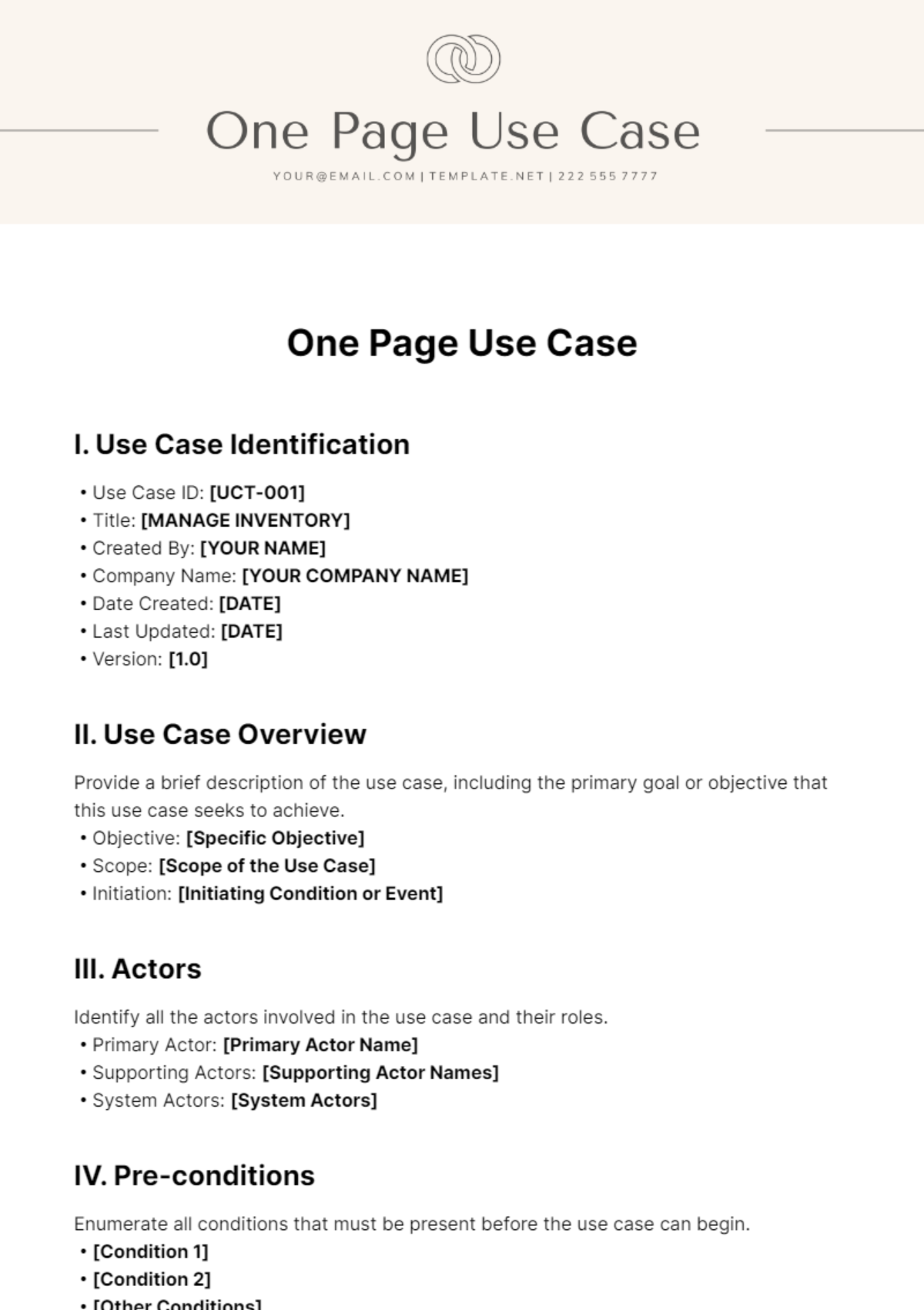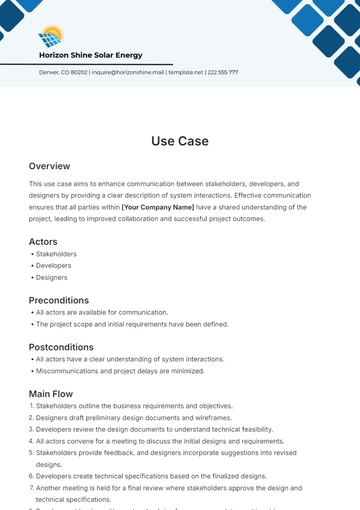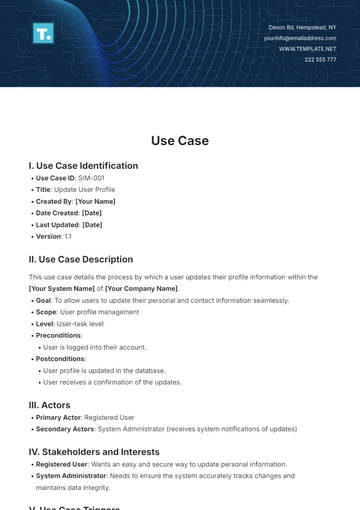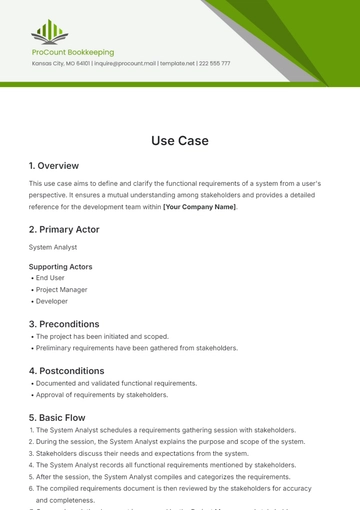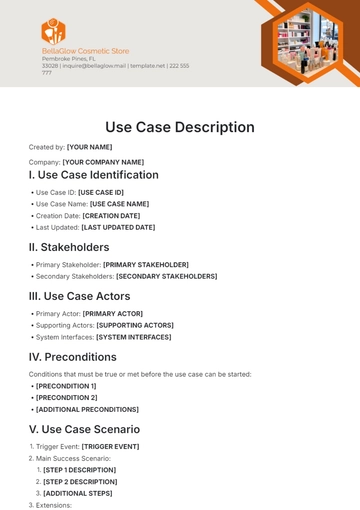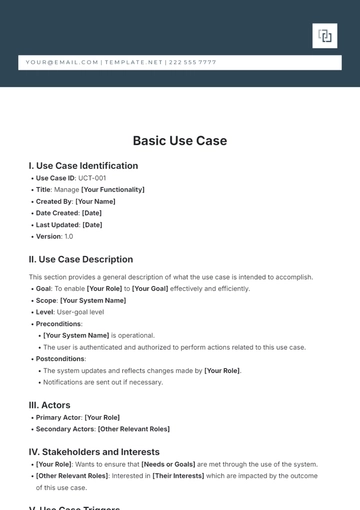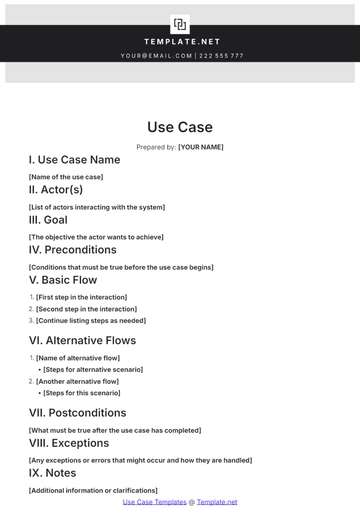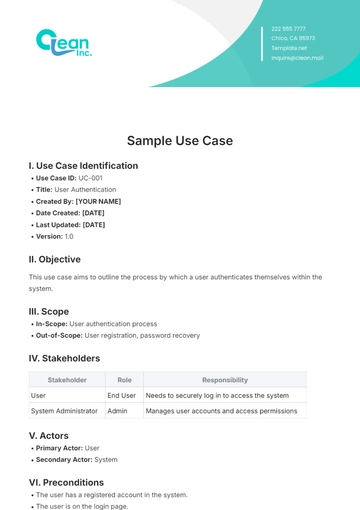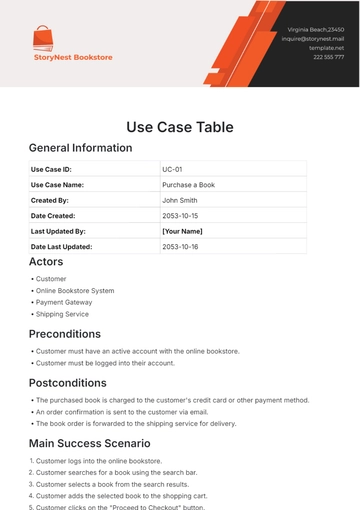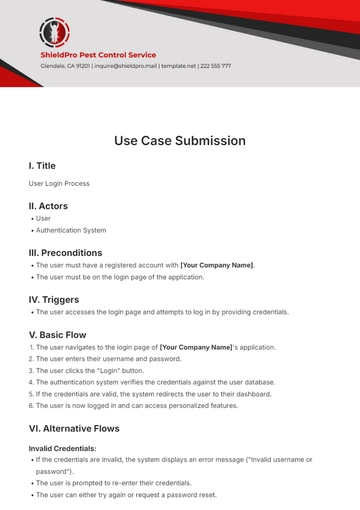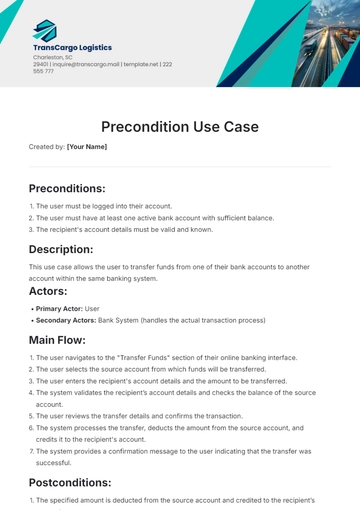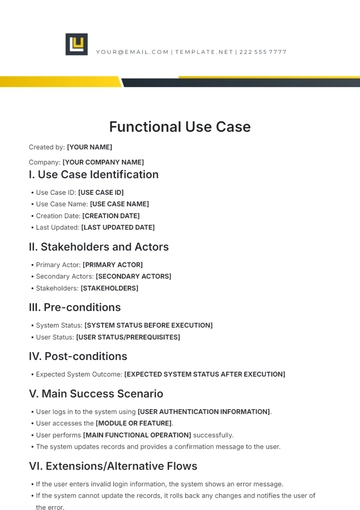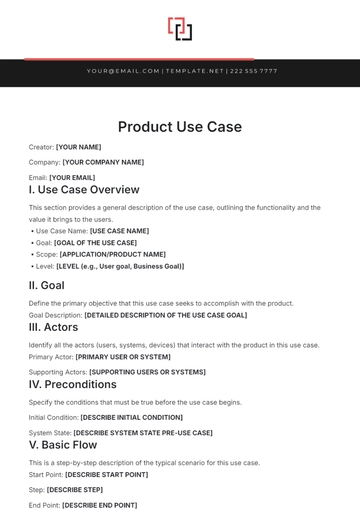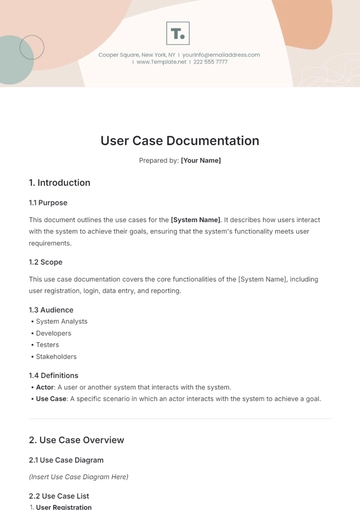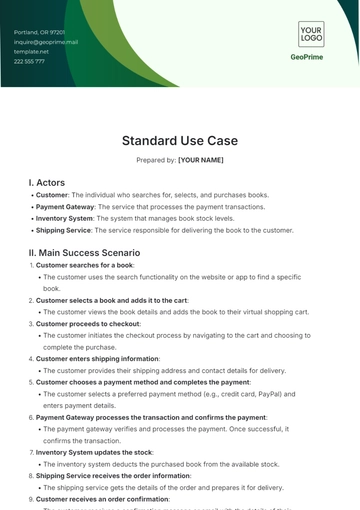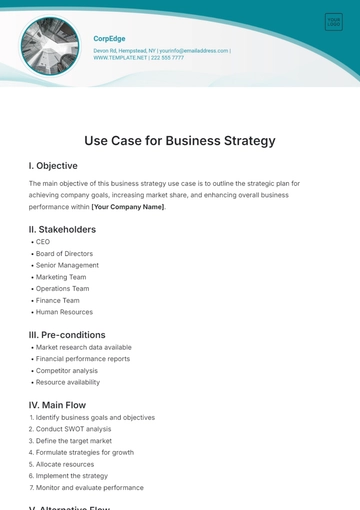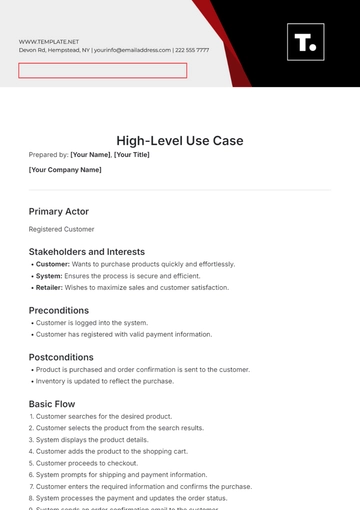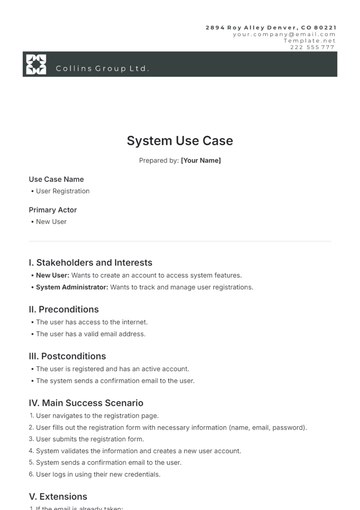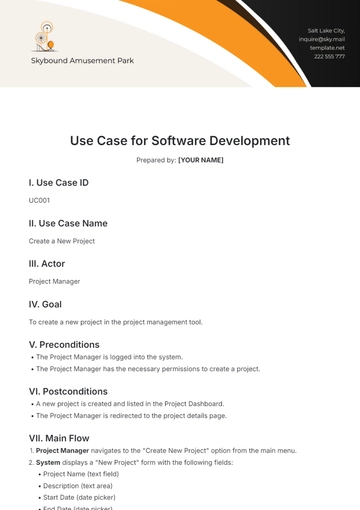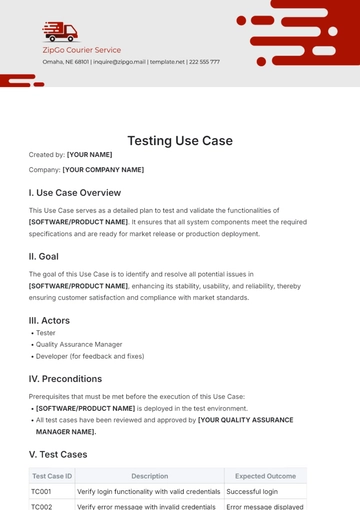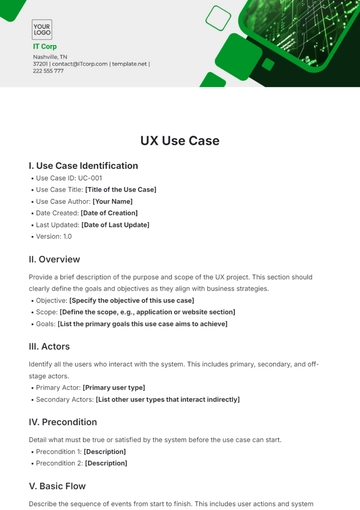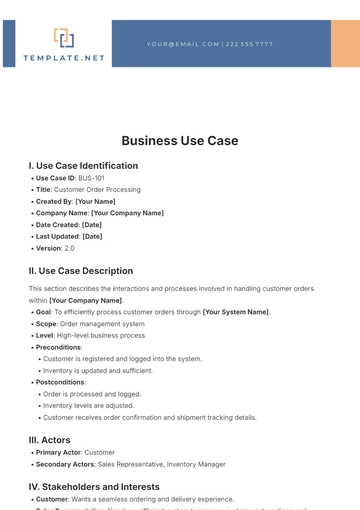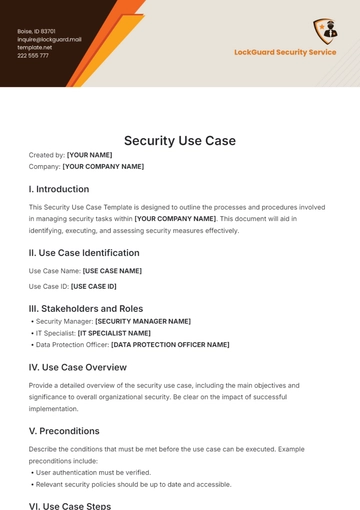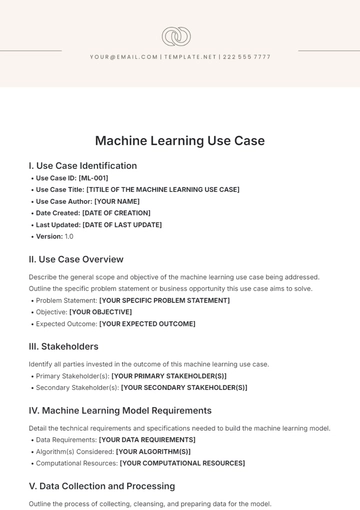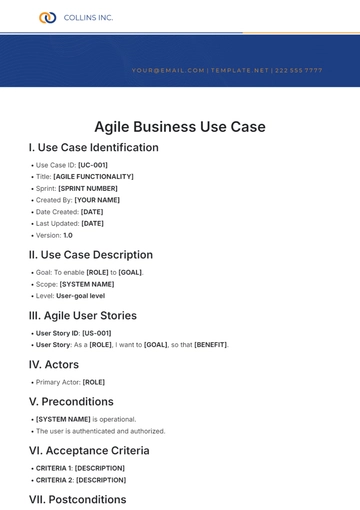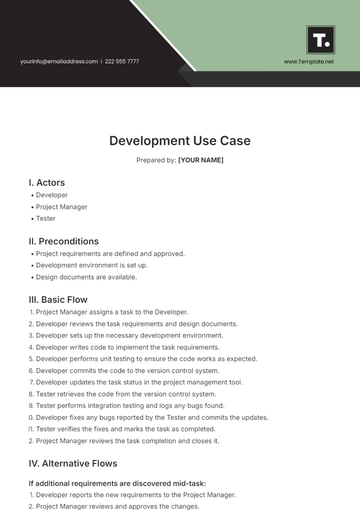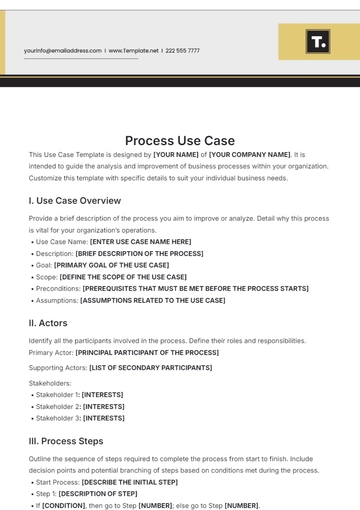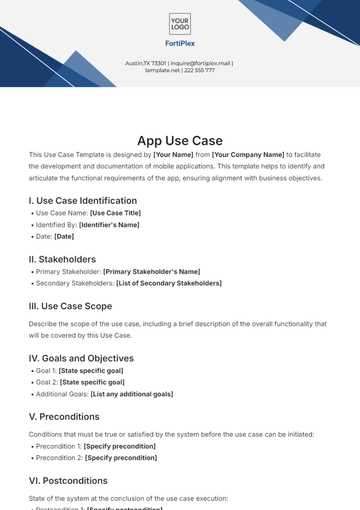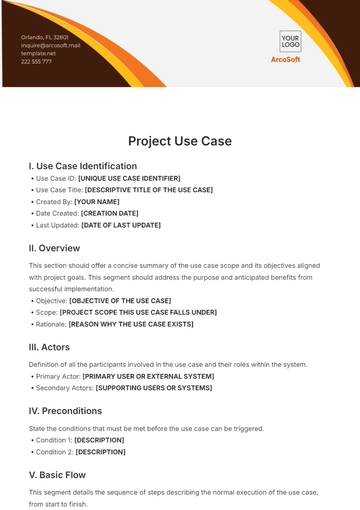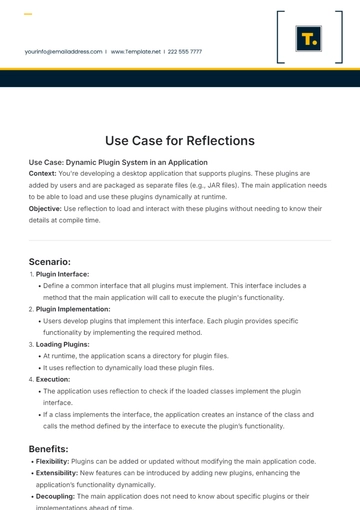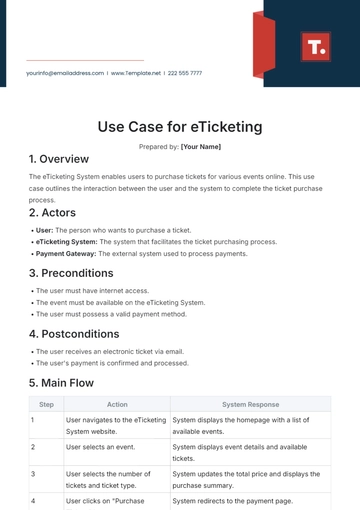One Page Use Case
I. Use Case Identification
II. Use Case Overview
Provide a brief description of the use case, including the primary goal or objective that this use case seeks to achieve.
Objective: [Specific Objective]
Scope: [Scope of the Use Case]
Initiation: [Initiating Condition or Event]
III. Actors
Identify all the actors involved in the use case and their roles.
Primary Actor: [Primary Actor Name]
Supporting Actors: [Supporting Actor Names]
System Actors: [System Actors]
IV. Pre-conditions
Enumerate all conditions that must be present before the use case can begin.
[Condition 1]
[Condition 2]
[Other Conditions]
V. Basic Flow of Events
Detail the sequential flow of the events that describe the standard operation of the use case.
[Event 1 Description]
[Event 2 Description]
[Further Events]
VI. Alternative Flows
Outline any alternative scenarios that deviate from the basic flow with corresponding branching conditions.
If [Condition], then [Alternative Event Actions].
Upon [Alternative Condition], [Consequent Actions] occur.
VII. Post-conditions
Describe the state of the system, user, and data after the use case concludes.
VIII. Exception Paths
List out scenarios in which errors or exceptions occur, and how the system should respond to them.
IX. Business Rules
Detail any relevant business or domain rules that influence the decisions or flow in this use case.
X. Special Requirements
Identify any non-functional requirements or special conditions that need to be met by the use case.
XI. Assumptions
List any assumptions that are made during the drafting of this use case which may affect implementation or understanding.
[Assumption 1]
[Assumption 2]
[Other Assumptions]
Use Case Templates @ Template.net
